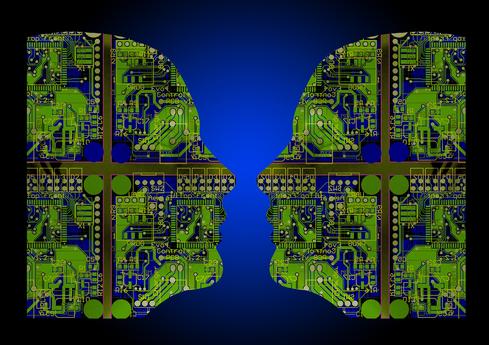Chris Anderson: Weaponized Lego, Drones & IoT
In his keynote address at the InformationWeek Conference, Chris Anderson said drones are the perfect example to show the rise of the Internet of Things.


11 IoT Programming Languages Worth Knowing
11 IoT Programming Languages Worth Knowing (Click image for larger view and slideshow.)
When was the last time you felt a disturbance in the Force?
Chris Anderson, CEO of 3D Robotics Stores, said he felt a "disturbance in the Force" in 2007 that ultimately led him to his current endeavors. Anderson shared his story in his keynote address at Monday's InformationWeek Conference.
In 2007, said Anderson, something with hardware had changed. It was the year the iPhone had come out and the makers of the Fitbit put a Wiimote sensor into an exercise device. In 2007, people were taking note of Arduino. The barriers to entry for hardware were starting to diminish, the same way they had years earlier for software.
It was also the year that Anderson and his son "weaponized Lego" by building an autonomous model plane using Lego Mindstorm parts and sensors.
Perhaps the most interesting part of Anderson's story (aside from the fact that he once lost a battle of the bands for the right to use the name R.E.M.), is that he never really set out to make one of the world's largest drone companies. Anderson was originally looking for ways to get his children enthused about the Maker Movement. This led to Anderson selling drones from his house -- the first manufacturing crew consisted of his children and was conducted around the family's dining room table. He soon connected online with Jordi Munoz, whom Anderson called a genius. Munoz turned out to be a teenager in Tijuana, Mexico, who felt the same disturbance.
[ What's this maker movement stuff all about, anyway? Read Why The Maker Movement Matters To Your Business. ]
With the cash flow from Anderson's DIY kits, Munoz created an assembly room with multiple employees and, eventually, a clean room. Anderson said that he was soon looking for venture capital and founding a company with three different factories. It sounded like a remarkable story, but Anderson is insisted it isn't. He said this is proof of a movement.
The movement comes from the fact that smartphones, connected sensors, and the cloud are all so easily connected. "It is the Internet of Things," Anderson said. "The Internet of flying things."
The ubiquity of cheap, cloud-connected hardware, sensors, and open APIs and code make it possible for anyone to create new hardware products quickly and inexpensively in their garage. He compared what's happening today to the era of cheap processors that enabled personal computing companies like Apple to rise out of garages in the 1970s.
According to Anderson: "Our drone is more sophisticated than anything the military has. Why? Because our users are less sophisticated. The military has trained pilots and checklists and tech support. Our users open a box under a Christmas tree and expect it to work. It is like the genius of an iPhone. One button. This is a one-button drone."
In other words, the disturbance in the Force wasn't just a personal tremor. It was as if a million nerds cried out at once "aha!" and were not silenced. Of course, this is the foundation of the Internet of Things. And, according to Anderson, the best place to look for it is in the garages of the world.
Interop Las Vegas, taking place April 27-May 1 at Mandalay Bay Resort, is the leading independent technology conference and expo series dedicated to providing technology professionals the unbiased information they need to thrive as new technologies transform the enterprise. IT Pros come to Interop to see the future of technology, the outlook for IT, and the possibilities of what it means to be in IT.
About the Author
You May Also Like






